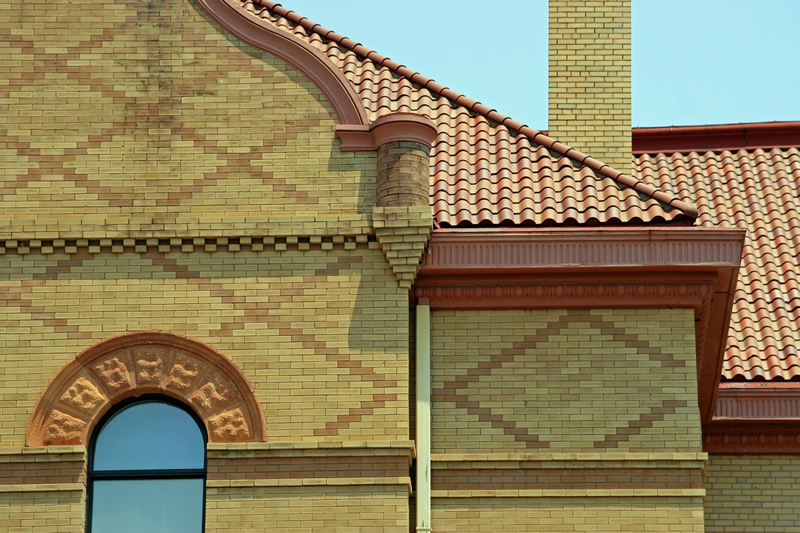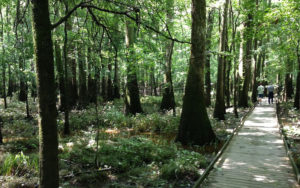
A longtime reader sent in this close-up shot of the brickwork of a South Carolina building that shows intricate detail and decorative work from the turn of the last century. Don’t’ let the red tiled roof set you off course. But let us know if you think you know the location of this iconic building by sending your guess to: feedback@statehousereport.com. And don’t forget to include your name and the town in which you live.
Our previous Mystery Photo
 Our July 13 mystery might have made your skin crawl – if you thought about all of the bugs you will encounter in the summer in the Congaree National Park in lower Richland County, which is where the photo was taken. The mystery was particularly tough because it looks like a lot of other great places (and guesses by readers) in South Carolina, including the Francis Beidler Forest near Harleyville, Walterboro’s city swamp park and Edisto Gardens in Orangeburg.
Our July 13 mystery might have made your skin crawl – if you thought about all of the bugs you will encounter in the summer in the Congaree National Park in lower Richland County, which is where the photo was taken. The mystery was particularly tough because it looks like a lot of other great places (and guesses by readers) in South Carolina, including the Francis Beidler Forest near Harleyville, Walterboro’s city swamp park and Edisto Gardens in Orangeburg.
Congratulations to these sleuths who figured out the location: Ashley Aldebol of Irmo; Charles E. Davis of Aiken; Bill Segars of Hartsville; Amy Wiesehahn, Robert Feinstein, Jay Altman and Jean Prothro, all of Columbia; Curt Rone of West Columbia; George Drumbor of Charleston; Steve Willis of Lancaster; Irving Rosenfeld of James Island; George Graf of Palmyra, Va.; and Christian Twitty of Bluffton.
Graf provided a little more context: “According to nationalparks.org, situated along the meandering Congaree River in central South Carolina, Congaree National Park is home to champion trees, primeval forest landscapes, and diverse plant and animal life. This 22,200-acre park protects the largest contiguous tract of old-growth bottomland hardwood forest remaining in the United States. Known for its giant hardwoods and towering pines, the parks floodplain forest includes one of the highest canopies in the world and some of the tallest trees in the eastern United States.
“A joint venture between the Old-Growth Bottomland Forest Research and Education Center and the Columbia Museum of Art, the Congaree National Park Art & Science Project provided 5 integrated, standards-based experiences that engaged more than 1,100 students (many minority, low-income, and first-time visitors) in the art and science of soil. Two youth interns helped with program delivery.”
Send us a mystery: If you have a photo that you believe will stump readers, send it along (but make sure to tell us what it is because it may stump us too!) Send to: eedback@statehousereport.com and mark it as a photo submission. Thanks.















 We Can Do Better, South Carolina!
We Can Do Better, South Carolina!